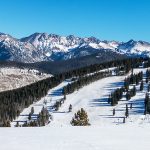More than 137.8 million Americans participated in outdoor recreation in 2009, according to a new study released today by The Outdoor Foundation. That equates to nearly 50% of all Americans six and older.
The findings are part of the 2010 Outdoor Recreation Participation Report, the only detailed report of its kind tracking American participation trends in outdoor recreation and sports with a focus on youth, diversity, and the future of the outdoors.
There were a whopping 10.1 billion outdoor outings in 2009, and 80% of participants say they plan to spend even more time participating in outdoor activities in 2010.
For the fourth year in a row, The Outdoor Foundation has produced this annual report, Outdoor Recreation Participation Report, to help the outdoor industry, federal officials, and state and local organizations better address the continuing inactivity crisis among our kids and the growing disconnect between children and the outdoors. The online survey captures responses from over 40,000 Americans ages six and older and covers 114 different outdoor activities, making it the largest survey of its type examining participation in sports and outdoor activities.
Participation in so-called gateway activities generally increased in 2009, and participants in those popular and accessible activities said they were much more likely to participate in another outdoor activity than they are likely to participate in one activity alone.
The findings reveal many encouraging trends – especially for youth. Over the last several years, youth outdoor participation has declined significantly in every age group, gender and ethnicity. The 2010 Report finds that the trends in youth participation are starting to move in encouraging direction.
Among youth ages 6 to 12 years old, participation showed only a 2 percentage point decline – a much smaller decrease than in years past. This study continues to track an overall downward slide in outdoor recreation among 6 to 12 year olds. In fact, 62% of that group participated in some form of outdoor recreation in 2009 compared to 64% in 2008 and 78% in 2006. The rates for older youth showed a similar positive trend.
“We are encouraged that the trends appear to be stabilizing with youth participation rates,” said Chris Fanning, executive director of The Outdoor Foundation. “Sharing the benefits of a healthy active outdoor lifestyle with all of our youth will ensure healthier children, healthier communities, and healthier businesses.”
The insights detailed in the 2010 Outdoor Recreation Participation Report are critical to efforts nationwide seeking to understand and reverse the growing inactivity crisis among youth and the growing disconnect between youth and the outdoors. Additional findings include:
There were a whopping 10.1 billion outdoor outings in 2009, and 80% of participants say they plan to spend even more time participating in outdoor activities in 2010.
For the fourth year in a row, The Outdoor Foundation has produced this annual report, Outdoor Recreation Participation Report, to help the outdoor industry, federal officials, and state and local organizations better address the continuing inactivity crisis among our kids and the growing disconnect between children and the outdoors. The online survey captures responses from over 40,000 Americans ages six and older and covers 114 different outdoor activities, making it the largest survey of its type examining participation in sports and outdoor activities.
Participation in so-called gateway activities generally increased in 2009, and participants in those popular and accessible activities said they were much more likely to participate in another outdoor activity than they are likely to participate in one activity alone.
The findings reveal many encouraging trends – especially for youth. Over the last several years, youth outdoor participation has declined significantly in every age group, gender and ethnicity. The 2010 Report finds that the trends in youth participation are starting to move in encouraging direction.
Among youth ages 6 to 12 years old, participation showed only a 2 percentage point decline – a much smaller decrease than in years past. This study continues to track an overall downward slide in outdoor recreation among 6 to 12 year olds. In fact, 62% of that group participated in some form of outdoor recreation in 2009 compared to 64% in 2008 and 78% in 2006. The rates for older youth showed a similar positive trend.
“We are encouraged that the trends appear to be stabilizing with youth participation rates,” said Chris Fanning, executive director of The Outdoor Foundation. “Sharing the benefits of a healthy active outdoor lifestyle with all of our youth will ensure healthier children, healthier communities, and healthier businesses.”
The insights detailed in the 2010 Outdoor Recreation Participation Report are critical to efforts nationwide seeking to understand and reverse the growing inactivity crisis among youth and the growing disconnect between youth and the outdoors. Additional findings include:
- The fitness and health benefits of outdoor participation are apparent. Outdoor participants rate their fitness level at 6.4 on a 10-point-scale vs. 4.9 for non-participants. In terms of health, outdoor participants rate their health level at 7.5 vs. 6.6 for non-participants.
- Like most other activities, outdoor participation was affected by the economy in 2009. More than 40% of outdoor participants said the economy impacted how often they participated in outdoor activities, almost half said they cut back on non-essentials, and nearly as many said they were cutting back on dining and entertainment.
- The majority of all Americans agree that preserving undeveloped land for outdoor recreation is important, though more outdoor participants than non-outdoor participants feel that way. A large percentage of outdoor participants also believe that developing local parks, hiking, and walking trails is important and that there should be more outdoor education and activities during the school day.
- Most youth are introduced to outdoor activities by parents, friends, family and relatives. Three-quarters of children ages 6-12 are influenced in her participation in outdoor activities by their parents. As they age, of course, their parent's role in their participation diminishes, and friends gain an increasingly influential role.
- The importance of providing physical education in school can't be understated. Among those who are current outdoor participants, 83% say they had PE in school between the ages of 6-12. That compares with just 70% of non-outdoor participants. 81% of outdoor participants also say they had PE in school from 13-17 years of age, while only 69% of non-outdoor participants recall PE in school during the same period of time.
- In 2009, participation in outdoor activities was significantly higher among Caucasians than any other ethnicity and lowest among African Americans in nearly all age groups.
- While 67% of Caucasian youngsters ages 6-12 participated in some form of outdoor recreation in 2009, only 50% of Hispanic kids and 39% of African American kids in the same age period participated.















